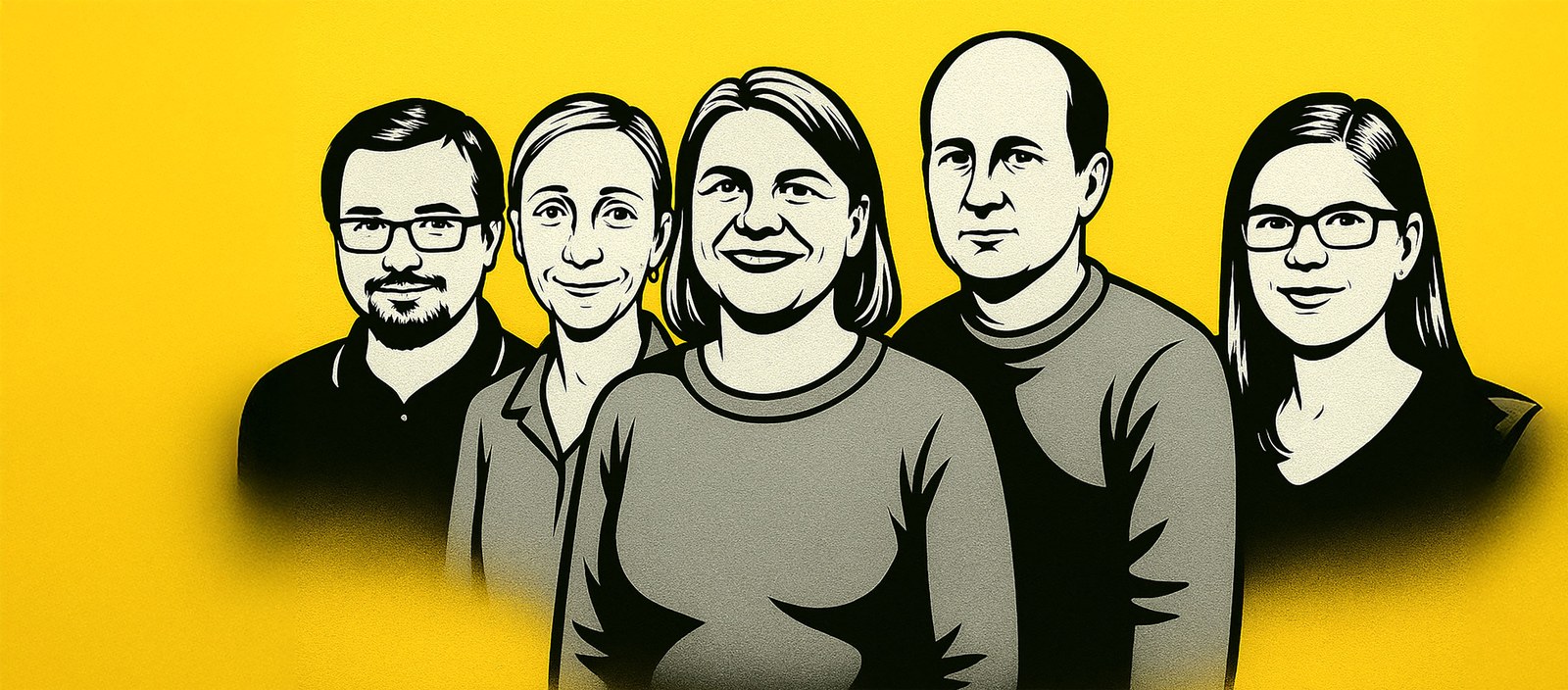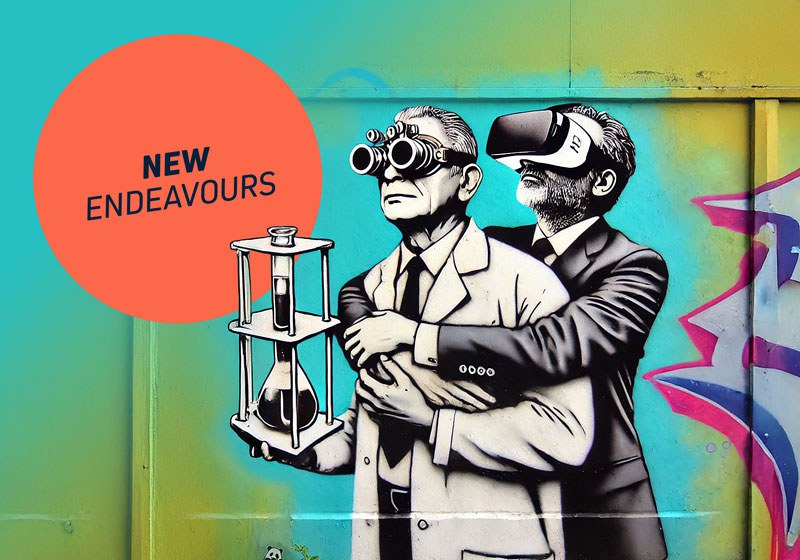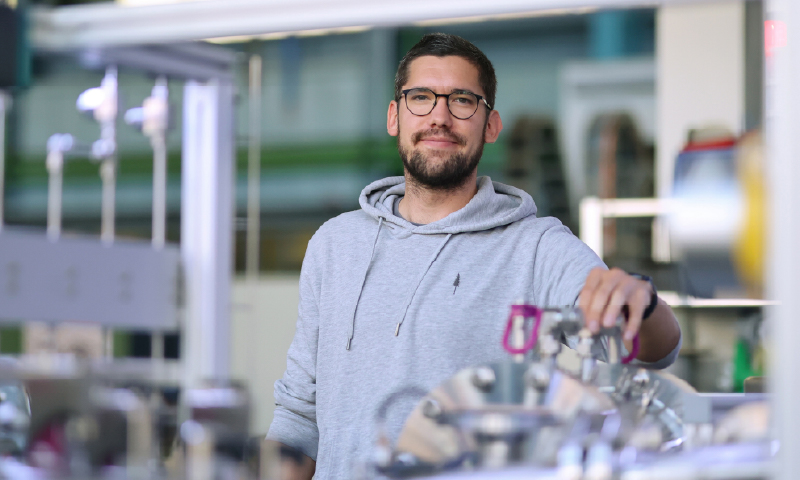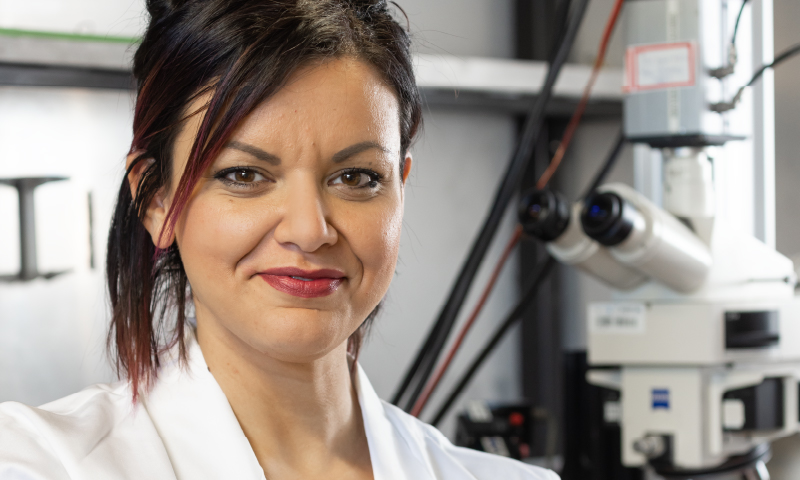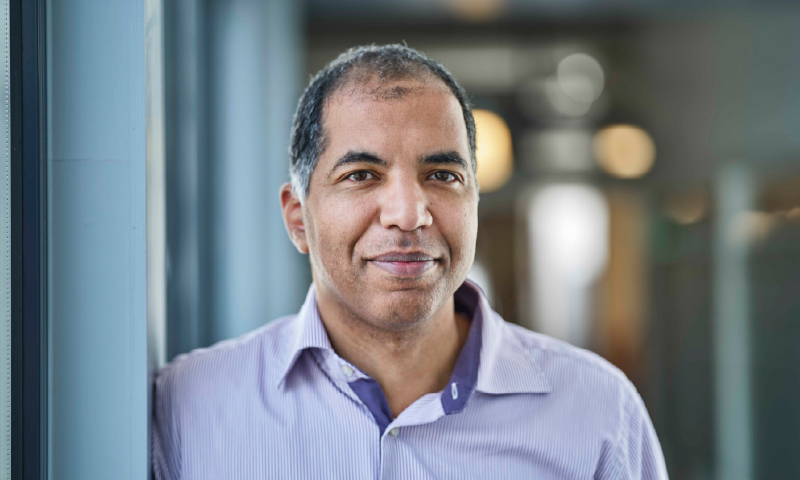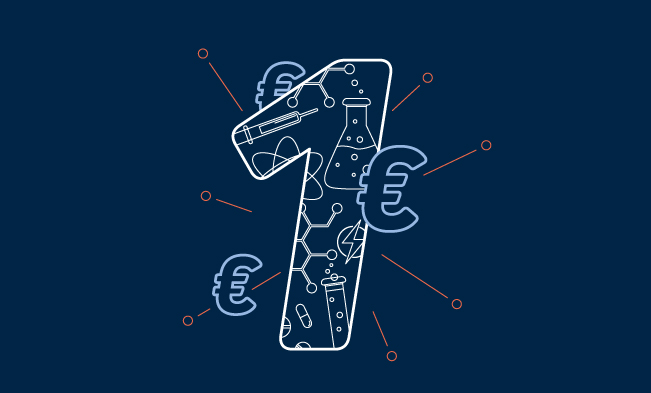Transfer Talents
Pioneers – Scientists and their innovations
Some are visionaries in the lab, others hands-on innovators – together they turn ideas into impact. Meet the people behind technology transfer at FZ Jülich.
June 2025
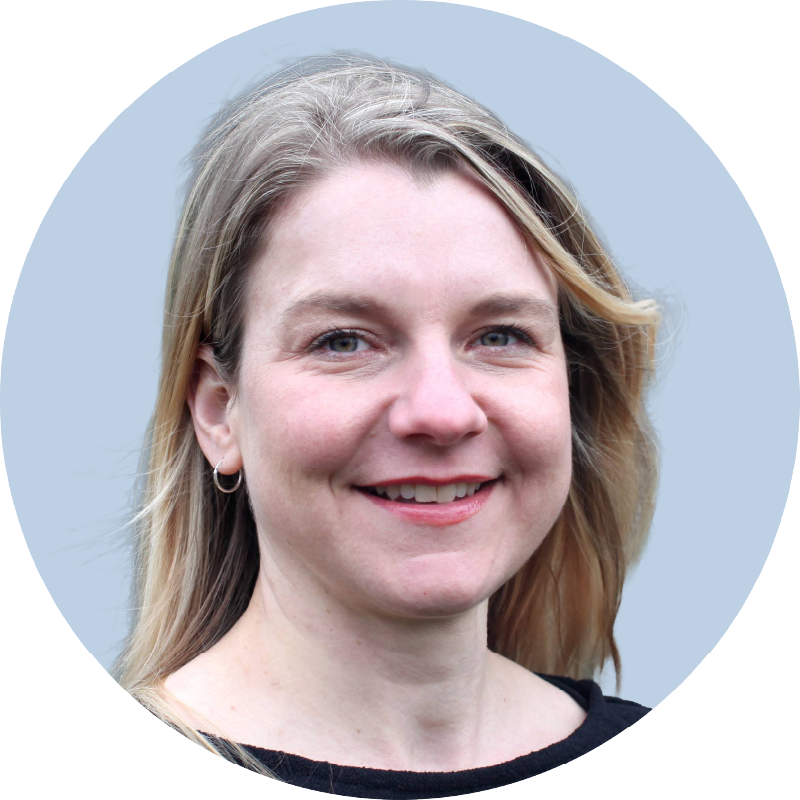
Dr. Juliane Bendig
Project Leader at the Institute of Bio- and Geosciences: Plant Sciences (IBG-2)
Plants show how they’re doing—you just have to look closely. SIFcam makes this possible. This camera detects the faint fluorescence (SIF) that plants emit during photosynthesis. When plants experience stress, the light changes. With SIFcam, you can see in real time, for example, if a plant is healthy—a valuable insight for agriculture, forestry, and environmental monitoring.
"This innovation opened up new applications for hard-to-reach areas."
When did you realize, “This has potential”?
We installed our camera prototype in a box mounted on a helicopter and took images from 2 km altitude, capturing an entire landscape. It was a spontaneous test with little preparation. I wasn’t sure if the camera would even survive such a flight—let alone whether the images would be usable. When I got the pictures, I immediately started stitching them into a mosaic. It worked, and the results looked really good. That’s when I thought, yes, this could really work.
Best advice you ever received from a colleague?
Keep it simple.
Best innovation of the 21st century?
The century is still young. In my field—remote sensing of vegetation—artificial intelligence has already shown great potential. The coming years will reveal if the benefits outweigh the downsides. Specifically for my work, the civilian use of small drones for spatially and temporally flexible monitoring tasks stands out. This innovation has created new possibilities for monitoring hard-to-reach, sometimes dangerous areas and automating routine tasks.
Your lifehack for generating new ideas?
Talking with colleagues always helps. Different perspectives can lead to elegant problem solutions or new ideas. Also, sometimes it helps to put an idea or problem aside temporarily and come back to it later. Often, things sort themselves out and fresh ideas emerge.
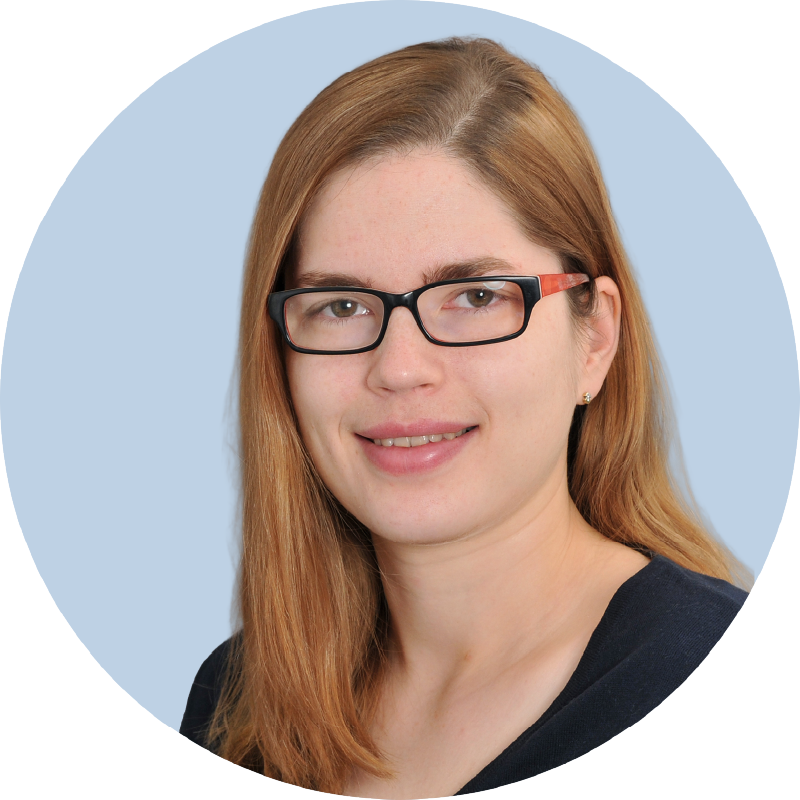
Dr. Melanie Finsterbusch-Rosen
Co-founder of CeraBatt, Institute of Energy Materials and Devices – Materials Synthesis and Processing (IMD-2)
CeraBatt is developing a sodium-based solid-state battery that is safer, more robust, and more sustainable than today's lithium-ion systems. This could revolutionize the energy sector, especially in stationary applications. At the JUICE Innovation Contest 2024, the concept not only convinced the jury—it won first place.
"At some point, it stopped being just research – and became a responsibility."
When did you realize, “This could change everything”?
When we were first able to push the sintering temperature below the critical decomposition limit, it was clear: We had cracked a problem that had been known for decades. From then on, it felt less like a coincidence and more like an obligation to bring this solution from the lab to the world.
The best advice a colleague ever gave you?
Science doesn't just live on data, but also on how we talk about it. If we can't inspire people, even the most brilliant idea remains invisible. Storytelling isn't an extra; it's a research tool.
Most important innovation of the 21st century?
My smartphone and direct access to the internet. Without this mobility, many things would be more difficult—from quick experiment checks to spontaneous online meetings directly from the lab corridor.
Your personal idea-hack?
Coffee. People. Room to wander. In relaxed conversations, remarks often arise that at first seem funny - and later turn out to be the crucial intuition.
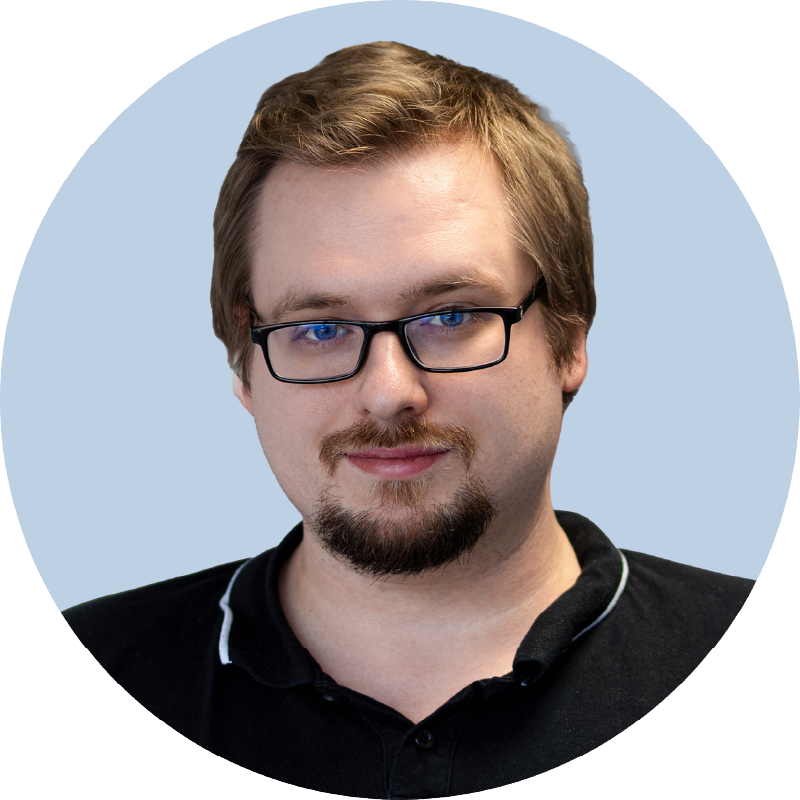
Dr. Patrick Weber
Driving a collaboration with TSI Incorporated at the Institute of Climate and Energy Systems: Troposphere (ICE-3)
Whether in polluted workplaces or urban centers, nanoparticles pose a risk to products and health alike. Monitoring air quality with high precision is essential. Out of this need, a new detection technology was developed—capable of identifying nanoparticles without the use of harmful substances. In collaboration with industry partner TSI Incorporated, the solution is now moving toward real-world use. One of the driving forces behind it: Patrick Weber, a JUICE alumnus.
"In our lab, you often hear: ‘It’s not rocket science.’"
When did you realize, “This has potential”?
Originally, the discovery was only intended to solve a safety problem during the commissioning of a certain measuring device. After consulting trusted colleagues, it became clear that our solution held far more treasures than we initially suspected.
Best advice you ever received from a colleague?
There were many helpful tips, especially for presentations and written work. But in our lab, people often say, "It’s not rocket science." I’m grateful that my suggestions are taken seriously and that I have room to experiment.
Best innovation of the 21st century?
I’m fascinated by 3D printers. For quick custom adjustments, holders, or demonstration materials, 3D printing is a great choice.
Your lifehack for generating new ideas?
Interdisciplinarity is the key here. My background in chemistry made the invention possible in a field dominated by physicists and metrologists. I also find it very enriching to attend conferences and lectures in adjacent scientific fields, as sometimes the solutions to our own challenges can be found there.
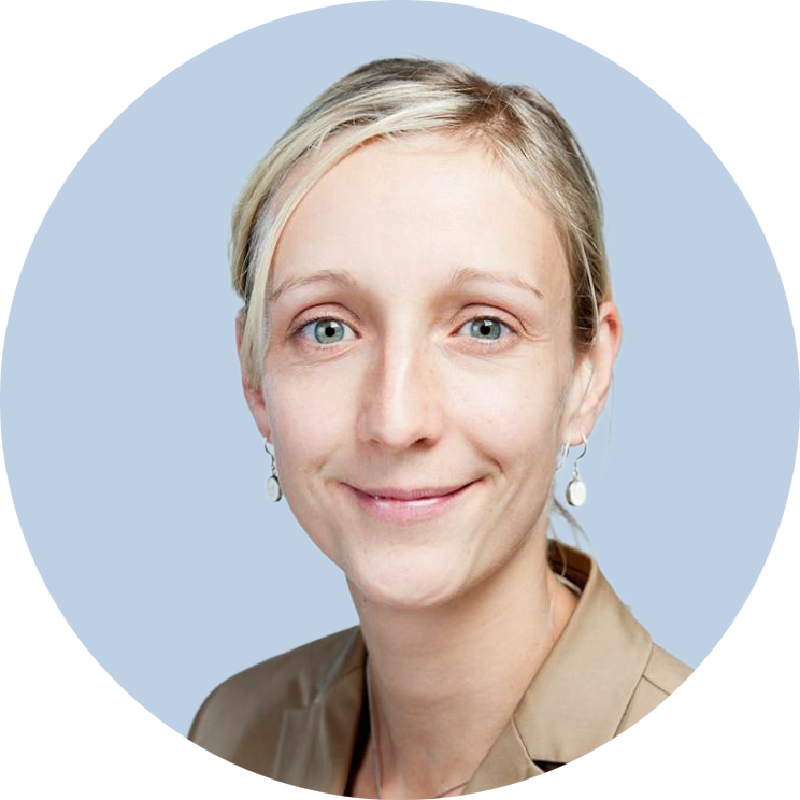
Dr. Janine Kutzsche
Head of Research Group at the Institute for Biological Information Processes: Structural Biochemistry (IBI-7)
Light touches, cold, or heat trigger severe pain in some people. The cause: damaged nerves or malfunctions of the nervous system. Triggers include infections, illnesses, or injuries. A team led by Janine Kutzsche aims to change this and is developing a drug to combat this neuropathic pain.
»Communication is also the crucial factor for success in science.«
When did you realize, “This has potential”?
When I first saw the analysis of the cognitive data from our small Phase I study with Alzheimer's patients and our drug candidate for Alzheimer's showed an improvement in one of the cognitive tests in all nine patients. That's when my hope grew that our drug could positively change the therapy for Alzheimer's patients in the future.
Best advice you ever received from a colleague?
Anyone who works in research knows how arduous the path often is and how unattainable some goals initially seem. A former colleague once told me this saying: "Turn your face to the sun, and the shadows fall behind you." It reminded me that you shouldn't let setbacks get you down, but rather be happy about everything that brings you a step closer to your goal.
Best innovation of the 21st century?
For me, it's the expansion of digitalization. A major benefit for my academic work is, for example, the ability to quickly and easily access information such as other people's research data. With the introduction of open access formats, this access will be improved even further in the future, which will significantly facilitate the exchange of knowledge and collaboration in research.
Your lifehack for generating new ideas?
They arise from exchanging ideas with other people. Often, simply describing the problem to others helps you arrive at the solution yourself. Communication, just as in other areas of life, is the decisive factor for success in science as well.
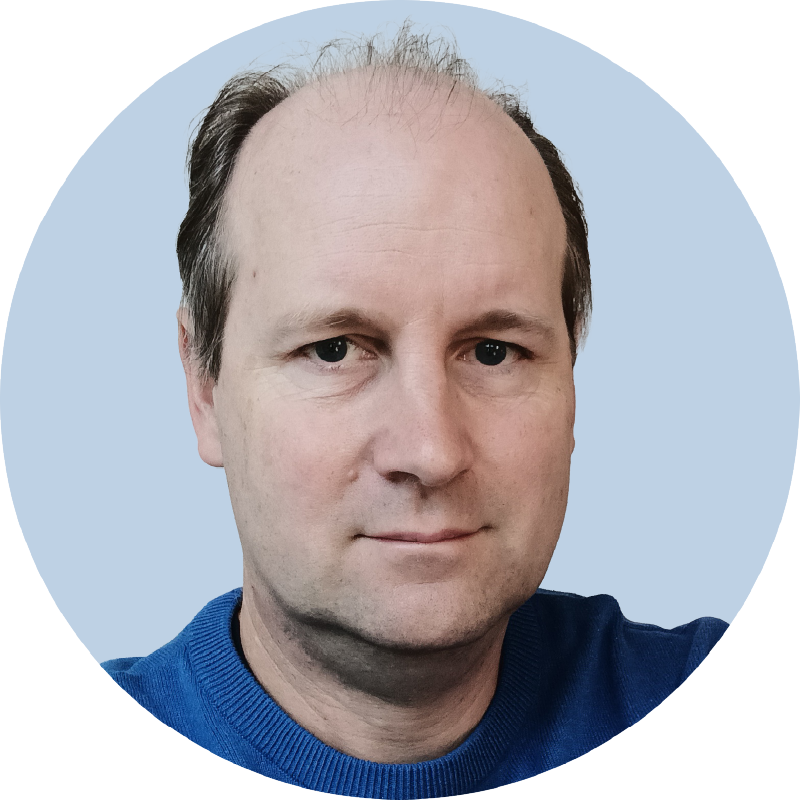
Dr. Alexander Pawlis
Group Leader at the Peter Grünberg Institute: Quantum Communication (PGI-10)
Quantum communication may sound like the distant future—but Alexander Pawlis is already helping build it. Together with his team, he is developing semiconductor chips that generate entangled photons, a key component of tomorrow’s communication infrastructure. In collaboration with the company ELEMENT 3–5, they are also advancing a novel shadow mask technology. It has the potential to drastically reduce process steps in semiconductor manufacturing—and pave the way for more efficient quantum devices.
»Make it simple, practical and elegant.«
When did you realize, “This has potential”?
There were various shadow mask technique (SMT) approaches at PGI-9 and in literature. Applying and further developing SMT on our machines at the PGI-10 nanocluster came from the simple necessity of creating good ohmic contacts in the II-VI semiconductor ZnSe—a big technical challenge since the 1990s. After about one year of development, applying SMT to ohmic contacts, we achieved results that outperformed benchmarks from over 30 years ago by an order of magnitude. That’s when I realized SMT could revolutionize the world as a sustainable, energy-efficient way to produce semiconductor microchips. We’re now working on transferring and further developing it for other semiconductor systems—already in close cooperation with an industry partner in our region.
Best advice you ever received from a colleague?
The best advice came from a mentor during my postdoc at Stanford University in 2005, Prof. Yoshihisa Yamamoto: “Make it simple, practical, and elegant.” That’s been my guiding principle ever since—searching for creative and sometimes unconventional ways to improve existing technologies and develop new methods. It was a driving force that ultimately led me to SMT.
Best innovation of the 21st century?
There isn’t a single innovation, but rather a sum of many developments in recent years: the rise of renewable energies and technologies like video conferencing, which enable close scientific exchange across continents. For us scientists, this is essential and fosters important global collaboration with great potential for research and innovation.
Your lifehack for generating new ideas?
Classic: relaxed exchange with colleagues and students over a cup of coffee. Our red sofa on the upper floor of building 02.6 is my favorite creativity spot. There, you can develop and discuss new ideas or talk science, or even chat about everyday life to mentally recharge.
Dive deeper into the current issue
When research, industry, and society unite their perspectives, they create solutions greater than the sum of their parts.
In the Endeavours magazine, discover how co-creation works — through real stories of collaboration, pioneering spirit, and successful transfer.

